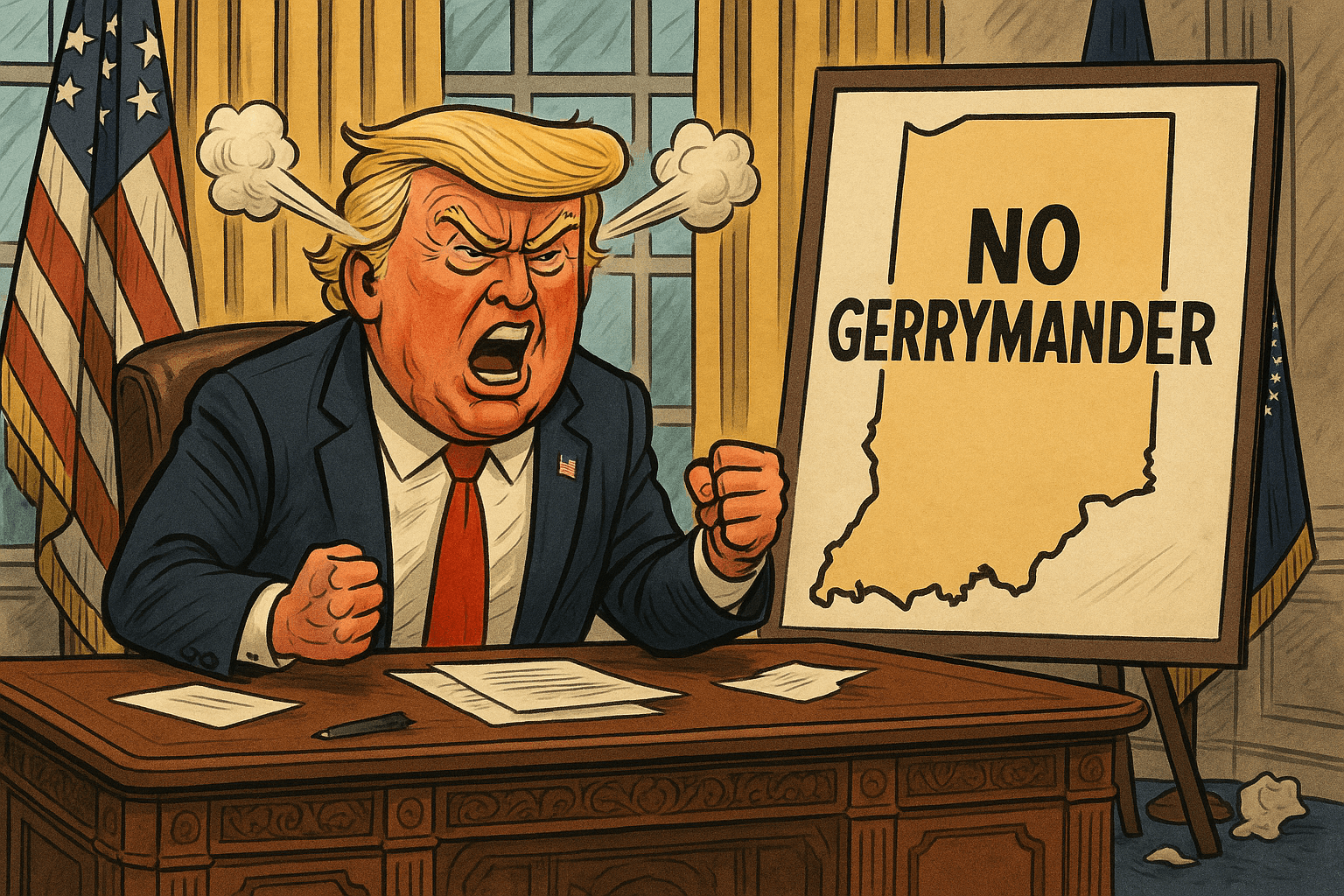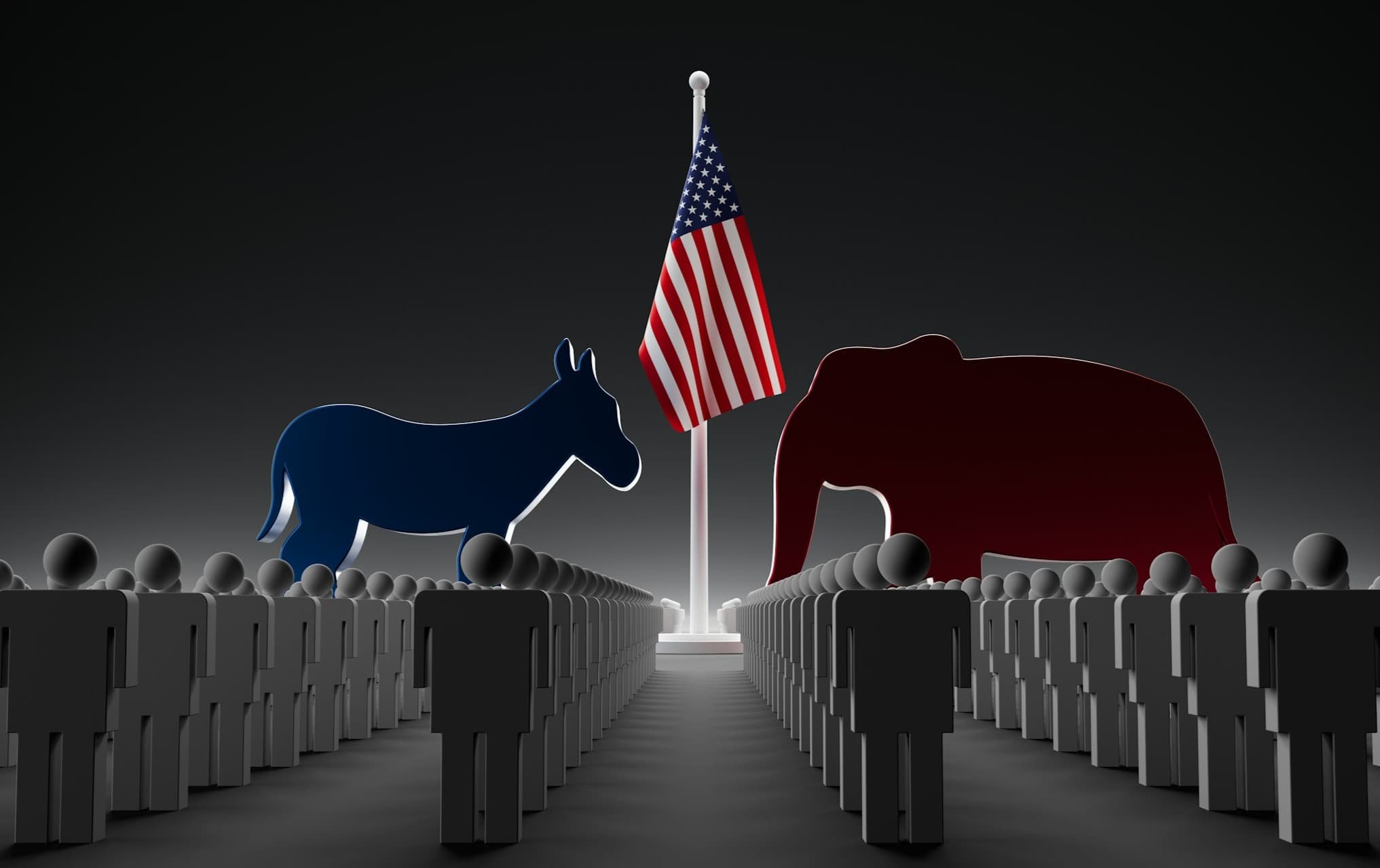3 Things Independent Voters Have to Be Thankful For – Reform Roundup

The number of independent voters continues to grow at a historic rate nationwide.
It is becoming increasingly common for this voting bloc to outnumber registered members of at least one major party, and even to make up a majority of the electorate in some places.
And yet, these voters are still denied access to critical taxpayer-funded elections in many states – something made all the more baffling in states where they make up the largest segment of voters, such as Oregon.
Nevertheless, here are three things independent voters have to be thankful for in November 2025.
1. Momentum Surges to Give Independent Voters Equal Access to Taxpayer-Funded Elections
OREGON
Oregon residents have an opportunity to change the way primary elections work in their state.
Two initiatives are being proposed for the 2026 ballot. One is a state constitutional amendment that makes it illegal for Oregon to fund closed primary elections. The second establishes the legislative framework for parties to make a choice:
Either take part in nonpartisan Top Two primaries in which all voters and candidates participate on the same ballot in these taxpayer-funded elections, regardless of party affiliation, or pay for their nomination processes themselves.
Of note, if Oregon adopts a Top Two system, it will mean that the entire West Coast of the U.S. would use nonpartisan primaries for most elections.
Oregon currently uses a closed partisan primary system, which bars 1.13 million registered independent voters – the largest voting group in the state – from participating in elections they fund, along with the over 200,000 voters registered with a minor party or “other.”
The proposed initiatives acknowledge that independent voters have a right to equal participation in elections, particularly at the most critical stage.
However, they are not the only ones in the United States designed to pressure the two parties and elected officials to give independent voters equal access to elections and stop treating them like second-class citizens.
NEVADA
In Nevada, which also has more registered independent voters than party members, a state constitutional amendment is in the signature-gathering phase that enshrines the right to vote in taxpayer-funded primary elections for all voters, regardless of party.
Vote Nevada PAC is circulating petitions for three initiatives, one of which will update the state’s Voter Bill of Rights (added to the state constitution by Nevadans in 2020) to include the following subsection:
12. To fully participate in all publicly funded elections without limitation, including, but not limited to, any requirement to affiliate with any private organization, such as a political party.”
This is a unique approach to primary reform. Not only does it explicitly state that independent voters have a right to taxpayer-funded primaries, but it puts the type of open primary to be used into the hands of state lawmakers to decide.
The state legislature could adopt nonpartisan primaries, like what is used in California or Alaska (Top Four). Or the legislature could implement semi-open partisan primaries, as the New Mexico legislature approved earlier this year.
The focus of the initiative is something most people agree with: All voters should have equal access to taxpayer-funded elections.
Under a semi-open system, party members must vote in their respective party’s primary, but independent voters can choose between the Republican and Democratic ballots. Nevada Assembly Speaker Steve Yeager pushed a semi-open primary bill before the close of the 2025 legislative session, which passed the legislature but was vetoed by the governor.
“The American experiment began with bold ideas and an openness to new practices. If we are who we claim to be, then a revival of bold ideas and new practices should be included in our electoral dialogue,” stated Vote Nevada.
Part of that dialogue is recognizing that every eligible voter has constitutional protections.”
OKLAHOMA
An Oklahoma initiative to adopt a nonpartisan Top Two primary is also in the petition-gathering phase. Oklahoma United and its volunteers are meeting with voters across the state to bolster support for an effort to end taxpayer-funded closed primaries under SQ 836.
“The effort to bring open primaries to Oklahoma has been building momentum for months,” said Dr. Kenneth Setter, whose name is on the original petition filed with the Oklahoma secretary of state. Dr. Setter is a retired pediatrician who lives in Tulsa.
We have hundreds of volunteers and signature gatherers across Oklahoma who are ready to get to work. The public response has been overwhelmingly positive, and we’re excited to get out to every corner of the state and make sure every voter has a chance to sign.”
KENTUCKY
Close to 350,000 voters in Kentucky are registered independent. However, the state uses closed, taxpayer-funded primaries that bar their participation unless they give up their right to associate and identify how they want and join a party.
Let Us Vote, a project of Open Primaries, has worked with a group of independent voters to launch Let Us Vote Kentucky to educate voters and state lawmakers about the ways independent voters are disenfranchised and to garner support for reform.
2. It’s Getting Harder for Politicians to Ignore the Value of More Choice Elections
It was reported this week that Democrats are being asked to consider changing the way they conduct their presidential nomination process by adding ranked choice voting (RCV), which allows voters to rank candidates in order of preference.
According to Axios:
Rep. Jamie Raskin (D-Md.), Joe Biden pollster Celinda Lake, the nonprofit FairVote Action, and other Democrats pitched the idea at a late October meeting, the sources said.”
If broadly adopted, the party would take an approach similar to New York City, which uses ranked choice voting exclusively in primary elections. The city has seen record turnout in its primaries since it first started using the reform in 2021.
“It favors positive politics rather than negative politics, and that's a great thing for the Democratic Party primaries," Raskin said. "Oftentimes, there's a sense of acrimony and bitterness that can last decades. Think about the race between Hillary and Bernie Sanders."
Advocates of ranked choice voting further argue that in crowded candidate fields – like in open presidential contests – it could encourage candidates to stay in longer by giving them more opportunities to pick up delegates. This, in turn, allows competition and choice to last.
In the last two presidential contests, the Democratic nomination process was all but wrapped up by March, even though much of the country did not get a chance to cast a ballot. And for Democrats, they later changed their nominee without voter approval.
Of note, the benefits of ranked choice voting in closed primaries would be reserved for party members only – just as in NYC. Meanwhile, the parties can still use the spoiler argument to discourage voters from choosing a third-party or independent candidate in the general election.
Party leaders have yet to back the use of ranked choice voting in the presidential general election, which would not only alleviate the spoiler argument but also ensure a candidate can’t win all of a state’s electoral votes with less than a majority of the vote.
It is unclear right now how the Democratic Party will move forward on any proposed reforms to its 2028 nomination process. The same can be said for the Republican Party.
Still, the growing demand for ranked choice voting within the Democratic Party is emblematic of the reform’s popularity across the U.S. and the political spectrum. In 2025, it was used in 18 cities and counties, including 14 on Election Day.
It is also worth noting that Maine by law uses ranked choice voting in the presidential primary and the presidential general election.
Ranked choice voting was recently adopted in Greenbelt, Maryland, and a Massachusetts legislative hearing considered 8 of the 10 cities and towns that have petitioned to adopt it, as well as a bill that would allow a local RCV option.
3. The Whole Nation Is Talking About The Need for Independent Redistricting
Much has been said in the national press about the mid-decade gerrymandering fight between Republicans and Democrats in 2025, which began when President Donald Trump encouraged a Texas gerrymander and escalated after Gov. Gavin Newsom said, “If you do it, we’ll do it too.”
The whole thing has stirred chaos ahead of the 2026 midterms while both sides yell, “They started it!” However, there is a silver lining that reformers cannot overlook: people across the country are increasingly recognizing the need for an independent redistricting process.
Gerrymandering used to be a topic that didn’t garner much attention outside reform groups and political wonks because it had been normalized under the umbrella of the U.S.’s manufactured two-party system.
However, now it is making front-page news because 2025 has made the hyper-nationalization of U.S. House control crystal clear: It is all about power, not local representation.
A poll in September found that 82% of Americans support the use of an independent redistricting commission. In fact, every time voters are asked if politicians should have the power to draw their own districts, most answer – “No.”
Politico attempted to present a poll it partnered with a London-based firm to conduct as evidence that voters support the gerrymandering war. Yet a closer look at the survey shows how misleading its own analysis is.
IVN author Cara McCormick observed that “72 percent either supported independent map drawing, supported voter oversight, or were uncertain,” despite the Politico headline, “Poll: Americans don’t just tolerate gerrymandering — they back it.”
This clearly isn’t true. It would be interesting to know if anyone pitched in to pay for the pro-gerrymandering poll at Politico, or if it was just a one-off.
Voters got some good news when a federal court in Texas blocked the state’s mid-decade gerrymander. Though the U.S. Supreme Court temporarily reinstated the 2025 map, those challenging it hope the high court will strike it down as a “racial gerrymander.”
Meanwhile, Prop 50 in California faces its own legal challenges. The measure, approved by 64% of state voters, created one of the most egregious partisan gerrymanders in modern U.S. history until 2031 in an effort to nullify the Texas gerrymander.
However, current Supreme Court precedent holds that political questions related to partisan gerrymandering fall beyond the court's purview, so it will not weigh in on those questions.
The Republican Party of California and the U.S. Department of Justice are relying on the argument that the new map under Prop 50 constitutes a racial gerrymander.
Notably, Prop 50 includes a provision stating that California's official policy is to support independent redistricting nationwide. Republican U.S. Rep Kevin Kiley (CA-3) says that while he opposed Prop 50, he supports that provision and will honor it with new legislation in Congress.
 Shawn Griffiths
Shawn Griffiths











